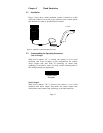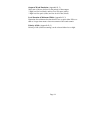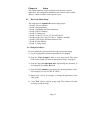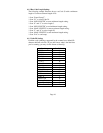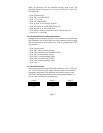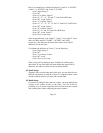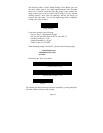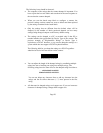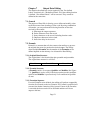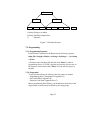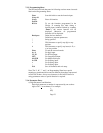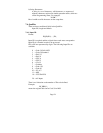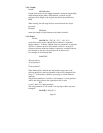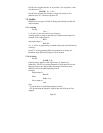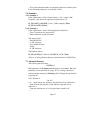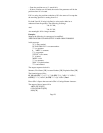
Page 21
Chapter 7 Output Data Editing
The function described here can be replaced by the “Pre-defined
Labels” function in 6.1.5 Predefined Labels. So if data-editing function
is defined, “Pre-defined Labels” will be removed. They can not be
defined at the same time.
7.1. General
The purpose of Data Edit is allowing you to define and modify a data
record that comes from decoding of a bar code. By using combination
of formulas, you can perform the following functions on the data
received by the scanner:
A. Rearrange the output sequences.
B. Delete characters from the record.
C. Insert characters to the record, including function codes.
D. Duplicate characters in the record.
E. Insert time delay in the record
7.2. Formula
Formula is a structure that tells the scanner what and how to process
the original data record to produce the desired output. The Wedge
allows multiple Formulas, but the number of the Formulas can be
defined depends on the memory size allocated for Data Editing.
7.2.1. Original Data Structure
The original data is the decoded data plus preamble and postamble.
The original data structure is as follow:
Preamble Decoded Data Postamble
7.2.2. Formula Structure:
A Formula consists of two parts: Qualifier and Modifier (See Figure
7.1). Qualifier is used to verify if the data record meets the conditions
specified and Modifier is processed only if all conditions in Qualifier
are met.
7.2.3. Execution Sequence
If several Formulas were defined, data editing will perform sequentially
from the first Formula to the last Formula. If a Formula is qualified and
executed, the further formulas will be ignored. If none of the Formulas
is executed, the data record will be discarded and there will be no
output to the host.



